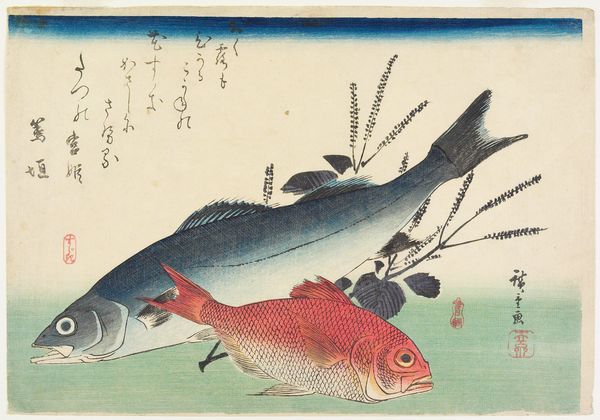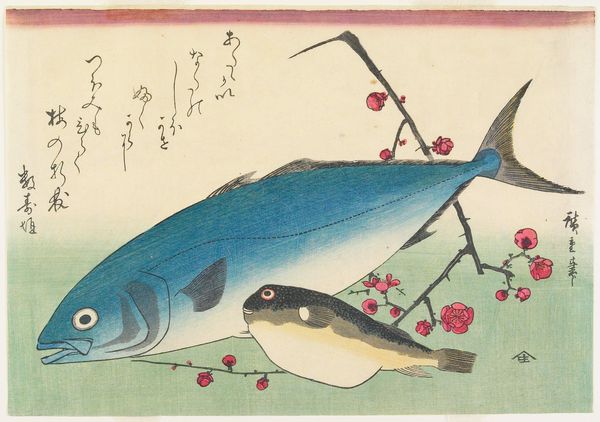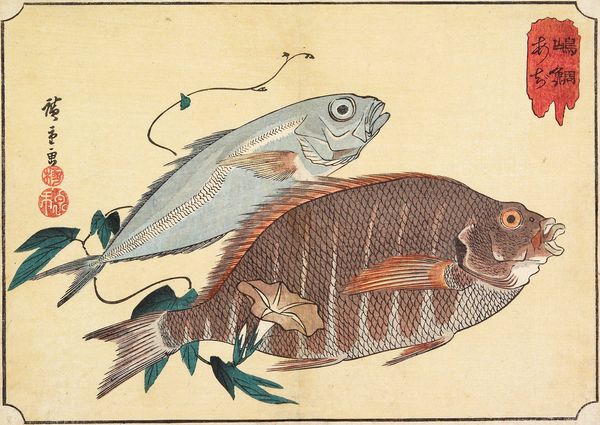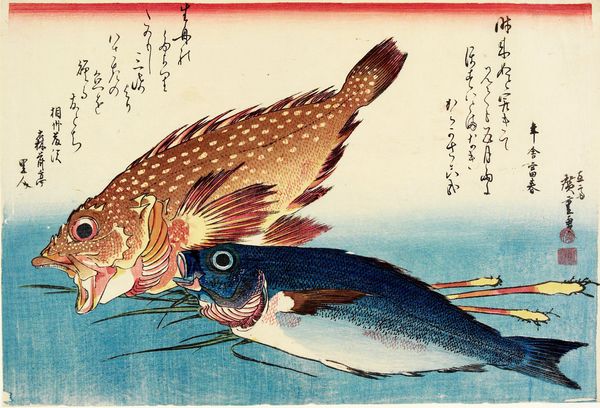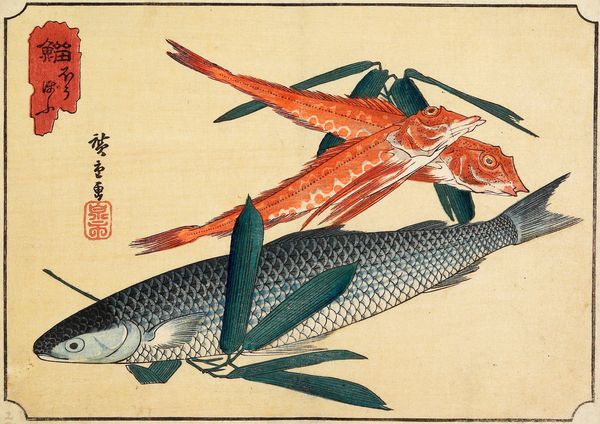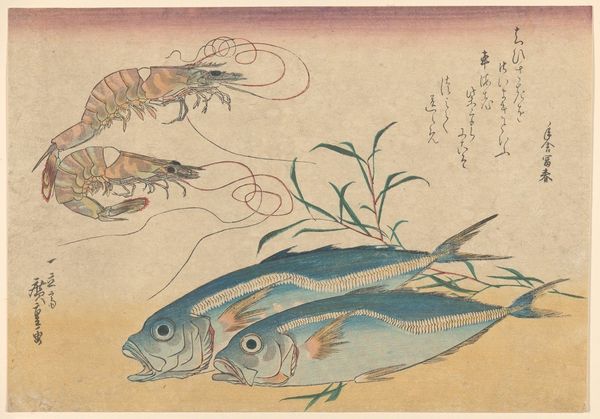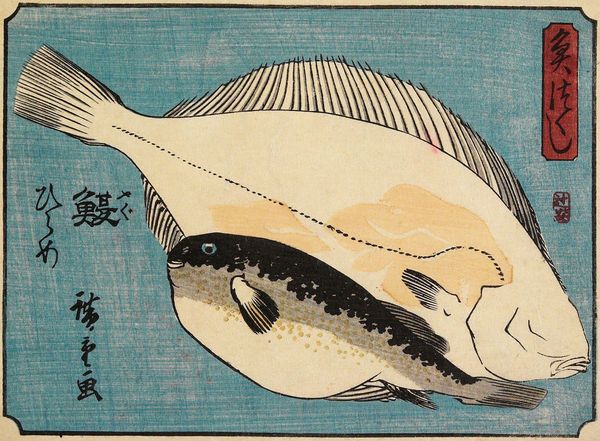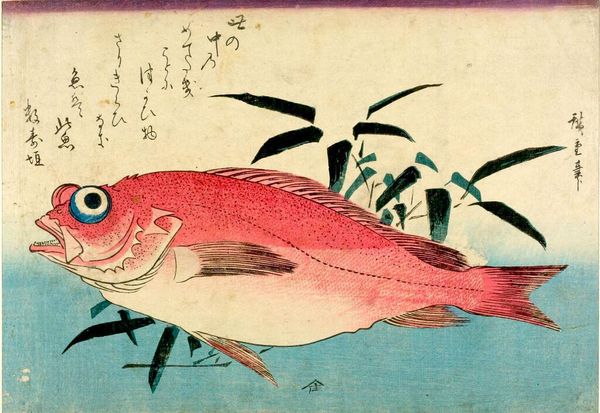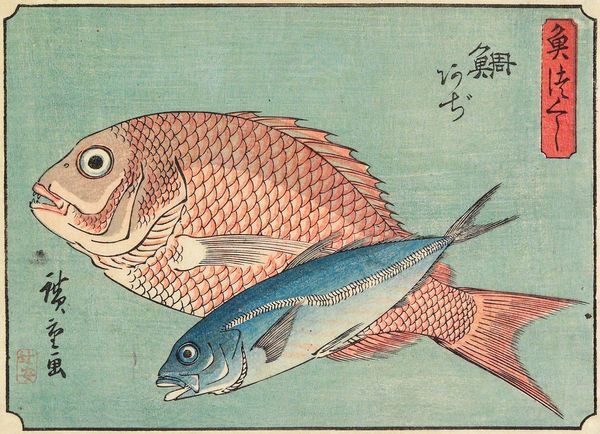
print, ink, woodblock-print
# print
#
asian-art
#
ukiyo-e
#
japan
#
ink
#
woodblock-print
#
realism
Dimensions: 6 5/8 × 9 7/16 in. (16.8 × 24 cm) (image, horizontal chūban)
Copyright: Public Domain
Editor: Here we have "Rockfish and Halfbeak," a woodblock print in ink on paper from the 1830s by Utagawa Hiroshige. I’m immediately struck by the contrast between the spiky rockfish and the slender halfbeaks. What do you see in this piece? Curator: This print, seemingly a simple still life, actually speaks volumes about the social dynamics of Edo-period Japan. Consider that Utagawa Hiroshige created ukiyo-e, "pictures of the floating world," which were immensely popular among the merchant class. How might this imagery of everyday seafood relate to the burgeoning consumer culture and the rising social status of merchants during that time? Editor: So, it's not just about pretty fish. You're saying the choice of subject reflects the culture? Curator: Precisely. These prints offered the merchant class access to a world of beauty and culture that was once reserved for the aristocracy. Further, representations of food held significant cultural weight. The careful arrangement, almost a design, elevates simple sustenance. Do you notice anything else about their depiction? Editor: I see how deliberately they are placed with the flowers. The realism of the fish mixed with the almost decorative flowers is quite interesting. Curator: Yes, the flowers themselves are culturally significant. But look closer; aren’t the eyes of that rockfish staring directly out at us? Consider this subversion of traditional artistic hierarchies; common items like fish are being granted the same attention as revered historical or mythological subjects. Do you think there might be a political undertone there? Editor: I hadn't thought of it that way. So, it's a celebration of the everyday but also a subtle commentary on shifting power? Curator: Exactly! Art offers reflections of culture, economy, and even political identity. Editor: This has completely changed how I see this print. It's not just a pretty picture of fish; it's a social statement. Curator: Indeed! Hopefully, this conversation serves as a reminder that a painting can provide critical perspectives into otherwise inaccessible societal power dynamics and historical conditions.
Comments
No comments
Be the first to comment and join the conversation on the ultimate creative platform.

